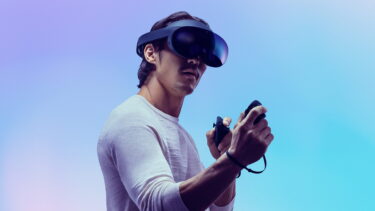10.1 million units: Short-term lower demand for VR and AR headsets

Although IDC has lowered its forecast for VR and AR by 2023, overall sales are expected to grow over the coming years, thanks in part to better AR glasses.
Research firm IDC has downgraded its forecast for AR and VR headsets in 2023 and now expects 10.1 million headsets to be sold worldwide. Previously, it had forecast about 13 million units. This is due to a weaker than expected 2022.
Despite the revision, IDC still expects unit sales to grow, albeit at a slower pace than originally forecast. The five-year forecast period from 2023 to 2027 is expected to see a compound annual growth rate of 32.6%.
VR: Sony, Meta, Pico and Apple create new momentum
According to IDC, the current global economic situation was responsible for the forecast correction in the current year. However, according to Jitesh Ubrani, research manager at IDC, an upturn is expected soon.

Research firm IDC predicts a significant growth spurt for the VR and AR market over the next few years. | Bild: IDC
“Sony's new PSVR 2 and Apple's foray into the space will help drive additional volume while new devices from Meta and Pico, expected towards the end of 2023, will build momentum for VR in 2024,” Ubrani said. With the Quest 3, for example, Meta is planning a successor to the Meta Quest 2 mobile VR headset that is likeley to appear this year.
However, due to their extreme popularity in 2020 and 2021, mobile VR headsets are expected to have a harder time achieving high growth rates in the future. Wired headsets, on the other hand, could benefit from their low sales volume in 2022. AR headsets are also expected to account for a larger share of total volume in the future, according to IDC.
IDC: Augmented reality is growing
“Meanwhile, on the AR front, consumer-facing brands such as Xiaomi, Oppo, and TCL are all expected to drive consumer awareness for the category over the course of the next 6 to 18 months,” Ubrani predicts.
Xiaomi, known primarily as a smartphone company, is no newcomer to AR technology and already sells data glasses with a micro OLED screen in China. At the beginning of March, Xiaomi introduced a new AR headset with retina sharpness and gesture control.
Ramon T. Llamas, research director for IDC's Augmented and Virtual Reality research team, sees AR on the rise overall: “Consumer VR use has dominated the AR/VR market, but growing interest in AR is starting to reshape that segment.”
Augmented reality is increasingly catching on with consumers
Until now, he said, the AR segment has been dominated by commercial applications and training. However, more comfortable form factors of the devices, brighter displays and clearer sound will ensure that AR glasses will also be better received by consumers in the future.
“Combined with the widespread popularity of gaming for VR headsets, consumer usage will lead both segments even as the case for commercial usage grows,” Llamas said.
Note: Links to online stores in articles can be so-called affiliate links. If you buy through this link, MIXED receives a commission from the provider. For you the price does not change.